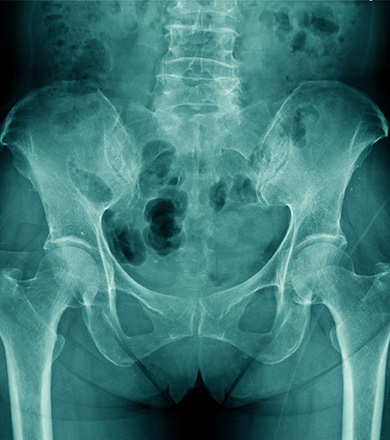Pathology
Tarlov cysts, also known as perineural or sacral nerve root cysts, are fluid-filled sacs that form around the nerve roots at the base of the spine, most commonly in the sacral region. These cysts are filled with cerebrospinal fluid (CSF) and can vary in size. While many Tarlov cysts are asymptomatic and discovered incidentally, some can cause significant symptoms by compressing adjacent nerve roots and structures.
Etiology
The exact cause of Tarlov cysts is not well understood, but several factors may contribute to their development:
Congenital Factors: Some individuals may be born with small cysts or a predisposition to develop them due to abnormalities in the meningeal coverings of the spinal nerves.
Trauma: Spinal trauma, such as falls, car accidents, or heavy lifting, can cause or exacerbate cyst formation.
Inflammation: Inflammatory conditions affecting the spinal meninges can lead to cyst formation.
Increased CSF Pressure: Conditions that increase cerebrospinal fluid pressure, such as a spinal fluid leak or a blockage, can contribute to the formation and enlargement of Tarlov cysts.
Heredity: There may be a genetic predisposition in some individuals, making them more susceptible to developing these cysts.
Symptoms
While many Tarlov cysts are asymptomatic, symptomatic cysts can cause a variety of symptoms depending on their size and location. Common symptoms include:
Localized Pain: Pain in the lower back, buttocks, or legs.
Radicular Pain: Radiating pain that follows the path of the affected nerve.
Numbness and Tingling: In the lower extremities.
Weakness: In the legs or feet.
Bladder and Bowel Dysfunction: In severe cases, cysts can cause issues with bladder and bowel control.
Sexual Dysfunction: Numbness or pain in the genital area.
Diagnostic Evaluation
The diagnosis of Tarlov cysts typically involves a combination of clinical evaluation and imaging studies:
Magnetic Resonance Imaging (MRI): The primary imaging modality used to diagnose Tarlov cysts. MRI provides detailed images of the cysts and their relationship to surrounding neural structures.
Computed Tomography (CT) Scan: Can be used to assess bone involvement and the precise anatomy of the cysts.
Myelography: An imaging technique that involves injecting contrast dye into the spinal canal to better visualize the cysts and their effect on the spinal cord and nerve roots.
Nerve Conduction Studies and Electromyography (EMG): To assess the functional impact of the cysts on nerve roots.
Conservative Treatment
For asymptomatic or mildly symptomatic Tarlov cysts, conservative treatment options may be sufficient:
Observation: Regular monitoring with periodic imaging studies to track cyst growth and symptom progression.
Medications:
Analgesics: NSAIDs, acetaminophen, or stronger analgesics for pain management.
Nerve Pain Medications: Gabapentin or pregabalin for neuropathic pain.
Muscle Relaxants: To relieve muscle spasms.
Physical Therapy: Exercises and stretches to improve mobility, strength, and alleviate pain.
Activity Modification: Avoiding activities that exacerbate symptoms and incorporating rest periods.
Epidural Steroid Injections: To reduce inflammation and pain in the affected area.
Surgical Treatment
Surgical intervention may be considered for symptomatic Tarlov cysts that do not respond to conservative treatments or cause significant neurological deficits. Surgical options include:
Microsurgical Cyst Fenestration: Creating a small opening in the cyst to drain the cerebrospinal fluid and reduce pressure on surrounding nerves.
Cyst Wall Resection: Removing part or all of the cyst wall to decompress the affected nerve roots.
Fibrin Glue Injection: Inserting fibrin glue into the cyst to seal it and prevent fluid accumulation.
Shunt Placement: Placing a shunt to divert cerebrospinal fluid from the cyst to another part of the body.
Laminectomy: Removing part of the vertebral bone to access and decompress the cyst.
Postoperative Care
Postoperative care for patients with Tarlov cysts typically involves:
Rehabilitation: Physical therapy to restore strength, mobility, and function.
Pain Management: Medications and techniques to manage postoperative pain.
Regular Follow-up: Imaging studies and clinical evaluations to monitor for cyst recurrence or complications.
Conclusion
Tarlov cysts, while often asymptomatic, can cause significant discomfort and neurological deficits when symptomatic. Understanding the pathology, etiology, and available treatment options is crucial for effective management. Conservative treatments may provide relief for many patients, but surgical intervention is sometimes necessary for those with severe or persistent symptoms. A comprehensive approach, including regular monitoring and individualized treatment plans, is essential for achieving the best outcomes for patients with Tarlov cysts.





